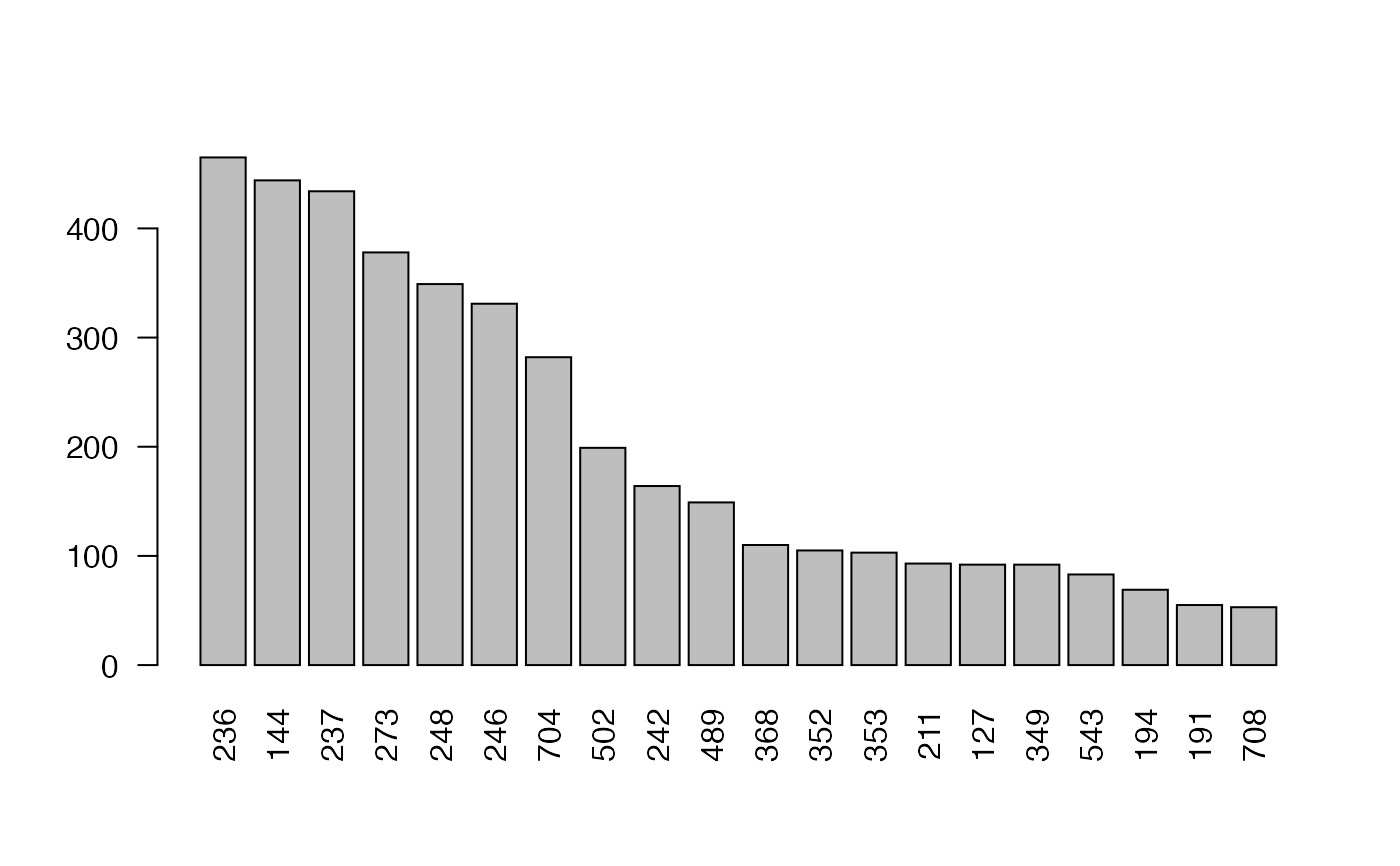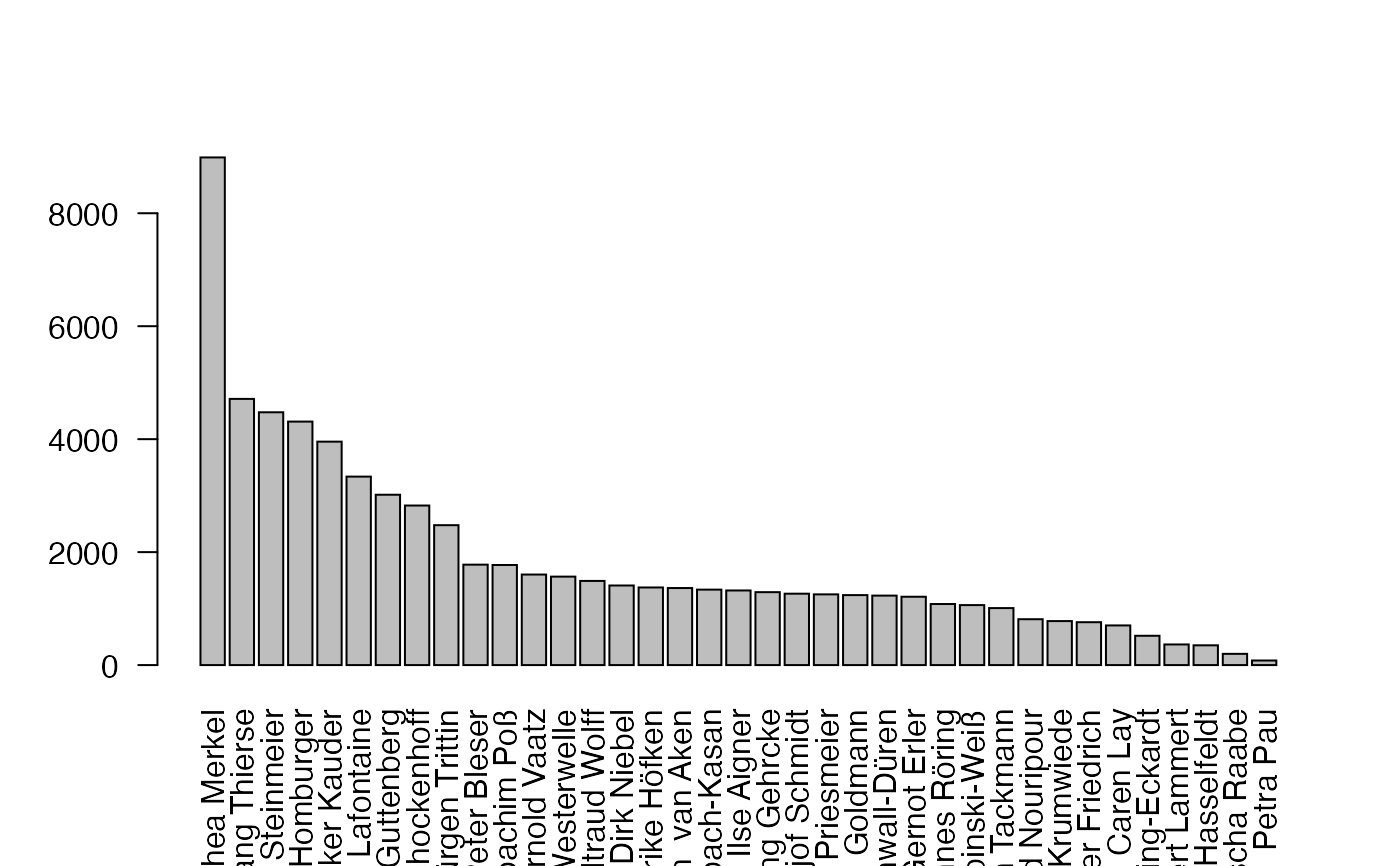Bundle of partitions (partition_bundle class).
Source:R/S4classes.R, R/partition_bundle.R, R/enrich.R, and 2 more
partition_bundle-class.RdClass and methods to manage bundles of partitions.
# S4 method for partition_bundle show(object) # S4 method for partition_bundle summary(object, progress = FALSE) # S4 method for partition_bundle merge(x, name = "", verbose = FALSE) # S4 method for partition_bundle,ANY,ANY,ANY [(x, i) # S4 method for partition_bundle barplot(height, ...) # S4 method for list as.partition_bundle(.Object, ...) # S4 method for environment partition_bundle(.Object) # S4 method for partition_bundle enrich(.Object, mc = FALSE, progress = TRUE, verbose = FALSE, ...) # S4 method for partition_bundle s_attributes(.Object, s_attribute, ...) flatten(object)
Arguments
| object | a |
|---|---|
| progress | logical |
| x | a |
| name | the name for the new partition |
| verbose | logical |
| i | integer index |
| height | height |
| ... | further parameters |
| .Object | a |
| mc | logical or, if numeric, providing the number of cores |
| s_attribute | the s-attribute to use |
Value
An object of the class 'partition. See partition for the details on the class.
a partition_bundle object
Details
The merge-method aggregates several partitions into one partition. The
prerequisite for this function to work properly is that there are no
overlaps of the different partitions that are to be summarized.
Encodings and the root node need to be identical, too.
Using brackets can be used to retrieve the count for a token from the
partition objects in a partition_bundle.
Slots
objectsObject of class
listthe partitions making up the bundlecorpusObject of class
characterthe CWB corpus the partition is based ons_attributes_fixedObject of class
listfixed s-attributesencodingObject of class
characterencoding of the corpusexplanationObject of class
characteran explanation of the partitionxmlObject of class
characterwhether the xml is flat or nestedcallObject of class
characterthe call that generated thepartition_bundle
Author
Andreas Blaette
Examples
# merge partition_bundle into one partition gparl <- corpus("GERMAPARLMINI") %>% split(s_attribute = "date") %>% merge() pb <- partition_bundle("REUTERS", s_attribute = "id") barplot(pb, las = 2)sc <- corpus("GERMAPARLMINI") %>% subset(date == "2009-11-10") %>% split(s_attribute = "speaker") %>% barplot(las = 2)

